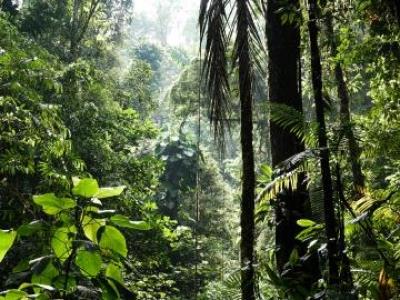
Ahead Of 2026 UN Biodiversity Summit, Meetings To Review Progress To Halt Loss
The first meeting, named SBSTTA-27, will prepare the first global review of progress in implementing the Kunming-Montreal Global Biodiversity Framework (KMGBF), the historic agreement to halt and reverse biodiversity loss, articulated around 23 action targets, unanimously adopted by the parties in 2022.
The targets must be achieved by 2030 to put the world on the path to living in harmony with nature -- the vision adopted within the KMGBF.
SB8J-1, the second meeting, will see the Subsidiary Body on Article 8(j) and Other Provisions of the Convention meet for the first time, marking a historic milestone for indigenous peoples and local communities as custodians of biodiversity and key actors in the endeavour to address the loss of biodiversity -- the foundation of all life on Earth.
The two meetings bring together representatives of governments, indigenous peoples and local communities, scientists and representatives of civil society, including women and youth groups, to pave the way toward the 2026 UN Biodiversity Conference (COP17) in Yerevan, Armenia, en route to the 23 goals of the KMGBF for 2030.
The Subsidiary Body on Scientific, Technical and Technological Advice (SBSTTA-27) will review the draft outline of the first Global Report of Progress, which will serve as a key input to COP17 and a second review at COP19 in 2030.
“The global review represents a critical checkpoint for the world,” said CBD Executive Secretary Astrid Schomaker.
“Healthy, biodiverse ecosystems underpin every aspect of human life, from food and water to medicine and climate regulation. The global review will tell us how far we have come and how far we still have to go. It will make clear whether parties are on track, and where we must accelerate action to deliver on promises to safeguard the planet's life-support systems,” said Schomaker.
An advisory group has developed an annotated outline for the global report on collective progress towards the implementation of the framework.
The outline provides a blueprint for how progress will be analysed, how different sources of information will be pulled together, and how the report can help in decision-making during the convention.
The global report will use national reports of the progress by each party, which are due in February 2026, along with information in the NBSAPs and national targets and the best available science and data.
The Convention on Biological Diversity (CBD) is a multilateral treaty signed in 1992 that promotes the conservation of biodiversity, the sustainable use of its components, and the fair and equitable sharing of benefits from genetic resources. It is a legally binding agreement with three main objectives and is a key document for sustainable development. The convention's Secretariat is in Montreal, Canada

Legal Disclaimer:
MENAFN provides the
information “as is” without warranty of any kind. We do not accept
any responsibility or liability for the accuracy, content, images,
videos, licenses, completeness, legality, or reliability of the information
contained in this article. If you have any complaints or copyright
issues related to this article, kindly contact the provider above.


















Comments
No comment